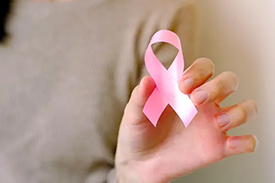Our Blogs
Visually Access To Your Doctor.
The Impact of Lifestyle Factors on Cancer Risk
The Impact of Lifestyle Factors on Cancer Risk • 14 Feb,2024

Introduction:
Cancer remains a leading cause of mortality worldwide, with lifestyle factors playing a pivotal role in shaping individual susceptibility to the disease. Emerging evidence underscores the profound impact of various behaviors and habits on cancer risk. This article explores the intricate relationship between lifestyle factors and cancer risk, shedding light on actionable strategies for prevention and risk reduction.
1. Tobacco Use and Smoking:
Tobacco use stands as the single most significant preventable cause of cancer, contributing to a multitude of malignancies, including lung, throat, mouth, esophagus, bladder, and pancreatic cancers.
Smoking cessation represents a paramount intervention in cancer prevention, mitigating the risk of tobacco-related malignancies and enhancing overall health outcomes.
2. Dietary Patterns and Nutrition:
Dietary habits profoundly influence cancer risk, with a diet rich in fruits, vegetables, whole grains, and lean proteins conferring protective benefits against various malignancies.
Conversely, consumption of processed meats, red meats, saturated fats, and sugary beverages is associated with an elevated risk of colorectal, breast, prostate, and pancreatic cancers.
3. Physical Activity and Exercise:
Regular physical activity is inversely associated with cancer risk, exerting protective effects against breast, colon, endometrial, and prostate cancers.
Engaging in moderate-to-vigorous physical activity not only promotes weight management but also modulates hormone levels, enhances immune function, and reduces chronic inflammation, all of which contribute to cancer prevention.
4. Alcohol Consumption:
Heavy alcohol consumption is a well-established risk factor for various cancers, including those of the mouth, throat, esophagus, liver, breast, and colon.
Limiting alcohol intake and adhering to recommended guidelines can mitigate cancer risk and improve overall health outcomes.
5. Sun Exposure and Ultraviolet Radiation:
Prolonged exposure to ultraviolet (UV) radiation from the sun or artificial sources such as tanning beds increases the risk of skin cancer, including melanoma, basal cell carcinoma, and squamous cell carcinoma.
Adopting sun-safe practices, such as wearing protective clothing, applying sunscreen, seeking shade, and avoiding peak sun hours, is critical for reducing UV radiation exposure and preventing skin cancer.
6. Screening and Early Detection:
Regular cancer screenings, tailored to individual risk profiles and age groups, facilitate early detection of malignancies when treatment is most effective.
Screening modalities such as mammography, colonoscopy, Pap tests, and skin examinations play a pivotal role in identifying cancer at its earliest stages and optimizing patient outcomes.
Conclusion:
The interplay between lifestyle factors and cancer risk underscores the importance of adopting health-promoting behaviors and mitigating modifiable risk factors.
